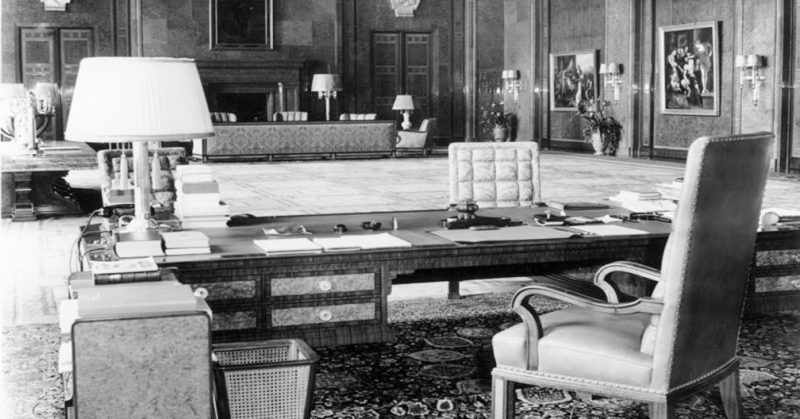A 16th-century tapestry that once hung in Adolf Hitler’s retreat high in the Bavarian Alps was recently returned to Germany after a 65-year disappearance.
The tapestry, bought for Hitler’s Eagle’s Nest one year before the Second World War began from an art gallery owned by a Jewish family, will eventually be displayed in Munich at the Bavarian National Museum.
Cathy Hinz, who gave it to the National World War II Museum in New Orleans, said it was going home. She grew up with the tapestry in her hometown, located in Minneapolis, passing it many times as she went up and down the stairs.
Her father, U.S. Army Lt. Col. Paul Danahy, related the story often of taking the tapestry after realizing its historical significance shortly after his 101st Airborne Division reached the Eagle’s Nest above Berchtesgaden. He died in 1986, age 71, and the tapestry eventually found its way to Hinz’s dining room.
Hinz gave the 7-foot-by-7 foot tapestry to the World War II Museum. At this point, enough of its past was known to enable Gordon “Nick” Mueller, CEO and president of the museum, and Robert Edsel, the board member and founder of the Dallas-based Monuments Men Foundation for the Preservation of Art, to determine the rightful owner.
Edsel said the important factor was determining whether the September 1938 sale of the tapestry was forced.
Washington attorney Thomas R. Kline who specializes in the field said many factors determine if the sale was forced. For example, some gallery owners opted to sell collections since the Nazis would steal them anyway if they didn’t sell.
It was determined that the family of Konrad Bernheimer, a current Munich art dealer, owned the gallery that sold the tapestry.
Hinz, who is traveling to Germany for the return ceremony, said she’s slightly nostalgic about the tapestry’s return, but said it feels like the right thing to do, Miami Herald reported.
Her thought was that it was never theirs to begin with. It came into their lives at a particular moment in history, but the artwork is much more than their history with it.
